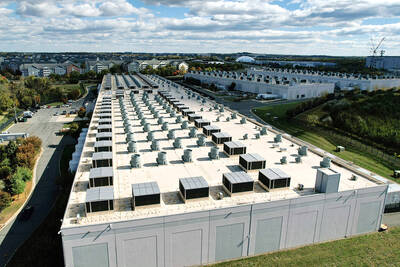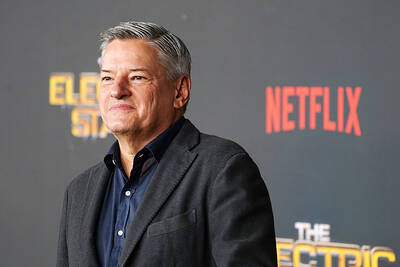The unemployment rate last month rose to its highest level since August last year, as employers offered fewer job openings and more college graduates entered the labor market butfailed to get an offer, the Directorate-General of Budget, Accounting and Statistics (DGBAS) said yesterday.
The unemployment rate — a lagging indicator of economic performance — climbed for the third consecutive month to 4.31 percent last month, from 4.21 percent in June, the agency said in its monthly report.
The seasonally adjusted unemployment rate, which he said was a more reliable indicator of the long-term trend, was up 0.01 percentage points from the previous month to 4.25 percent last month, the report said.
“More school-leavers entered the job market last month, further pushing up the number of first-time jobseekers failing to find a job,” DGBAS deputy director Chen Min (陳憫) told a press conference.
The latest data showed that 490,000 people were unemployed last month, an increase of 13,000 from the previous month, with the number of first-time jobseekers failing to get a job rising by 11,000.
The increase was also reflected in the growing youth unemployment rate, with joblessness among 15-to-24-year-olds rising to 12.96 percent last month, up from 12.36 percent in June and 12.91 percent during the same period last year, the report showed.
Chen said the jobless rate may continue to show a rising trend this month on the same seasonal effect, which may boost the number of first-time jobseekers failing to get a job.
Weak sentiment about the economy would be the other major factor dragging down local employers’ hiring demand and further affecting the labor market in the near future, DGBAS said.
The number of employed people was 10.88 million last month, up 1.21 percent from a year earlier, marking the lowest comparative month-on-month rise in the past two years, which indicated the conservative attitude of employers generating new positions, the agency said.
Henry Ho (何啟聖), a public relations director at 1111 Job Bank (1111人力銀行), also said the continuous downturn trend in the nation’s export orders indicated employers may decrease the number of job openings, further affecting the labor market.
DGBAS also unveiled the latest salary data yesterday, which showed that national monthly salaries averaged NT$37,276 (US$1,240) in the first half of this year, up 1.88 percent from a year ago.
However, when bonuses and other forms of compensation are included, the average monthly remuneration package showed a 0.24 percent markdown from a year earlier to stand at NT$48,829 in the first six months.
This reflected employers awarding lower year-end bonuses and other vocational rewards this year because the global economic slowdown is impacting their businesses, DGBAS said.
In addition, after adjusting for inflation — which climbed 1.47 percent year-on-year in the first six months — real wages fell a further 1.68 percent from a year earlier, data showed.

Taiwan’s exports soared 56 percent year-on-year to an all-time high of US$64.05 billion last month, propelled by surging global demand for artificial intelligence (AI), high-performance computing and cloud service infrastructure, the Ministry of Finance said yesterday. Department of Statistics Director-General Beatrice Tsai (蔡美娜) called the figure an unexpected upside surprise, citing a wave of technology orders from overseas customers alongside the usual year-end shopping season for technology products. Growth is likely to remain strong this month, she said, projecting a 40 percent to 45 percent expansion on an annual basis. The outperformance could prompt the Directorate-General of Budget, Accounting and

The demise of the coal industry left the US’ Appalachian region in tatters, with lost jobs, spoiled water and countless kilometers of abandoned underground mines. Now entrepreneurs are eyeing the rural region with ambitious visions to rebuild its economy by converting old mines into solar power systems and data centers that could help fuel the increasing power demands of the artificial intelligence (AI) boom. One such project is underway by a non-profit team calling itself Energy DELTA (Discovery, Education, Learning and Technology Accelerator) Lab, which is looking to develop energy sources on about 26,305 hectares of old coal land in

Netflix on Friday faced fierce criticism over its blockbuster deal to acquire Warner Bros Discovery. The streaming giant is already viewed as a pariah in some Hollywood circles, largely due to its reluctance to release content in theaters and its disruption of traditional industry practices. As Netflix emerged as the likely winning bidder for Warner Bros — the studio behind Casablanca, the Harry Potter movies and Friends — Hollywood’s elite launched an aggressive campaign against the acquisition. Titanic director James Cameron called the buyout a “disaster,” while a group of prominent producers are lobbying US Congress to oppose the deal,

Two Chinese chipmakers are attracting strong retail investor demand, buoyed by industry peer Moore Threads Technology Co’s (摩爾線程) stellar debut. The retail portion of MetaX Integrated Circuits (Shanghai) Co’s (上海沐曦) upcoming initial public offering (IPO) was 2,986 times oversubscribed on Friday, according to a filing. Meanwhile, Beijing Onmicro Electronics Co (北京昂瑞微), which makes radio frequency chips, was 2,899 times oversubscribed on Friday, its filing showed. The bids coincided with Moore Threads’ trading debut, which surged 425 percent on Friday after raising 8 billion yuan (US$1.13 billion) on bets that the company could emerge as a viable local competitor to Nvidia